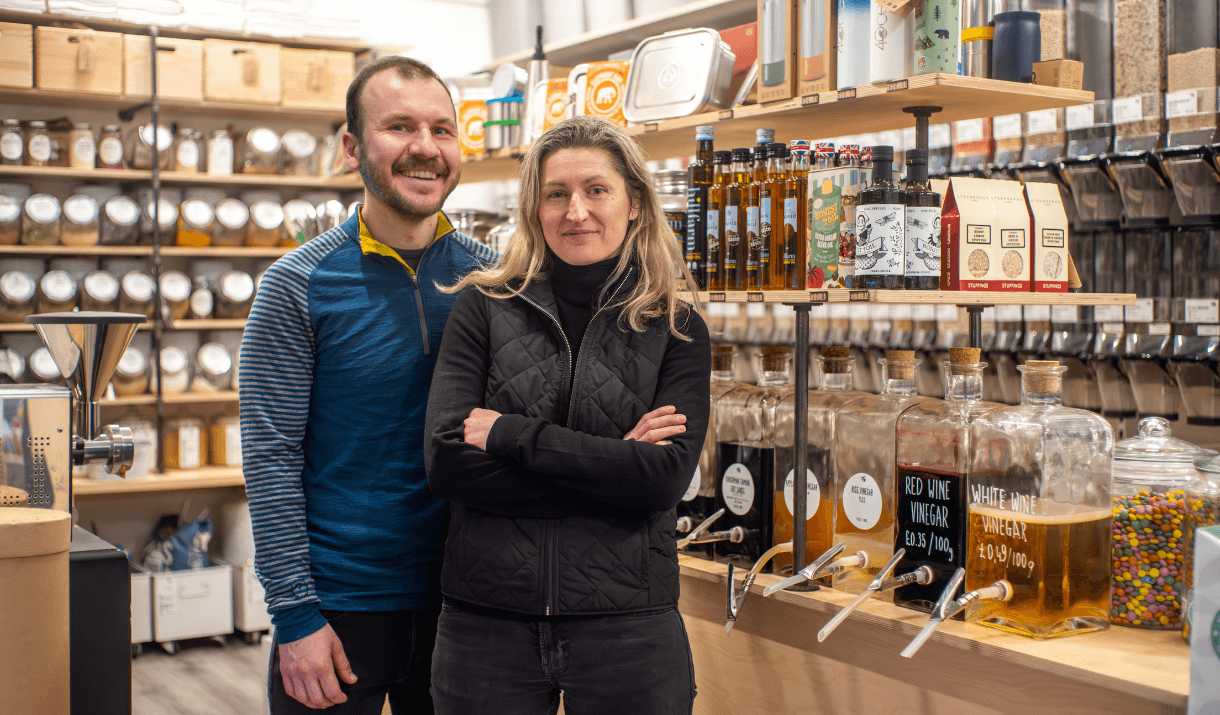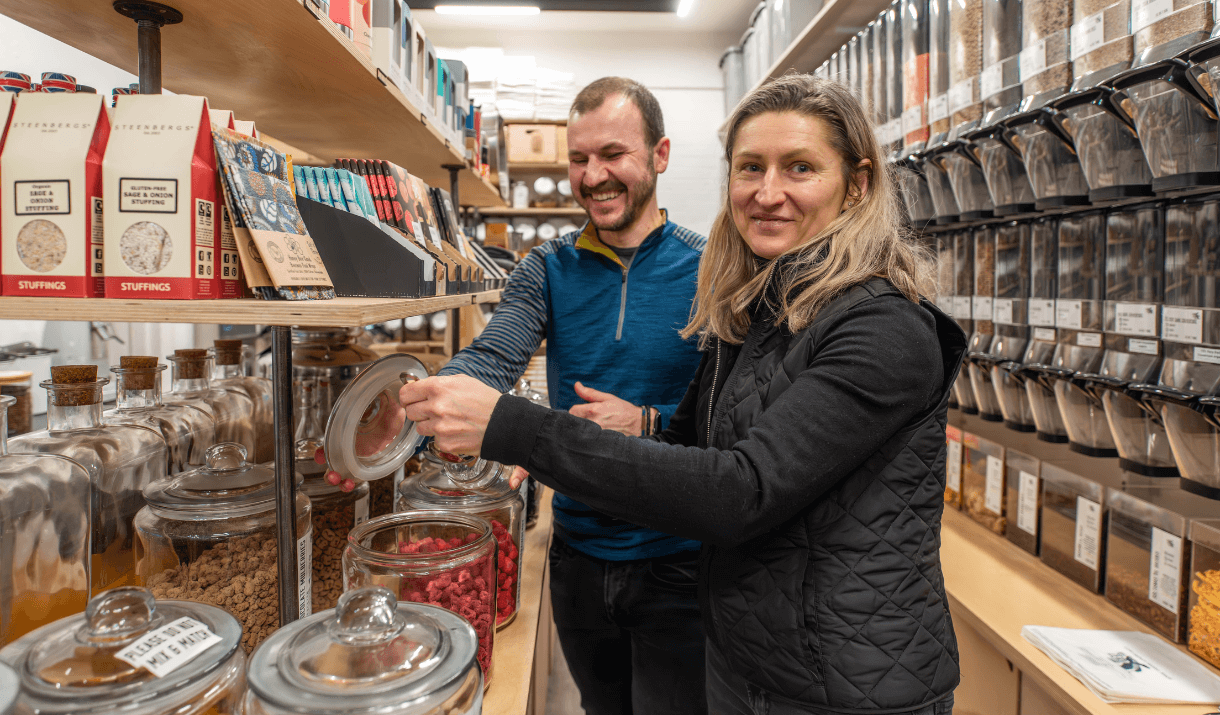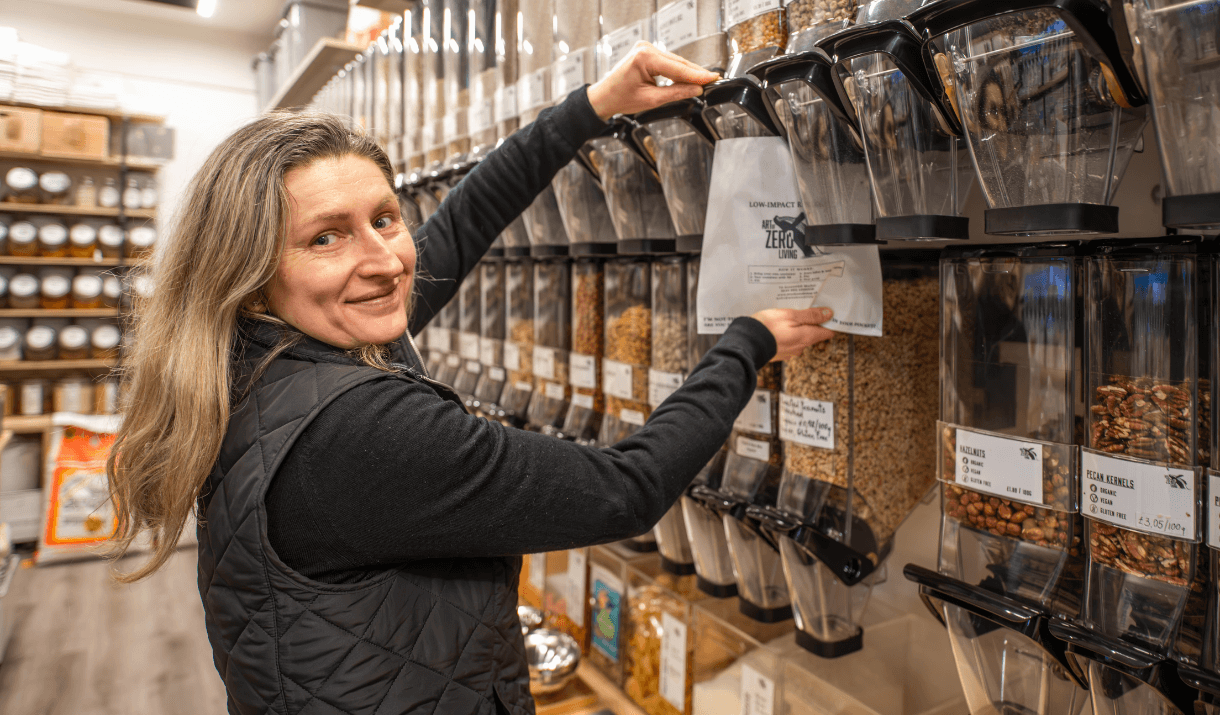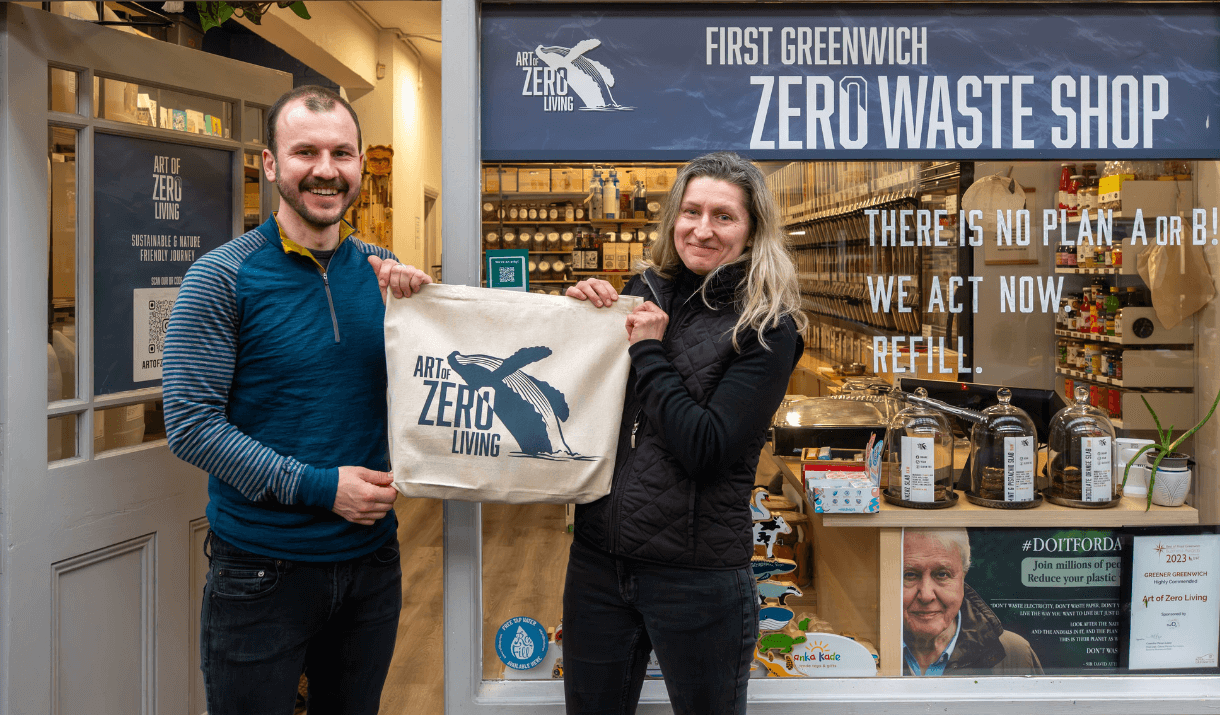
‘We think there is too much unnecessary single-use plastic in the world; so we give people sustainable alternatives,’ explains Vita Viskackaite from the Art of Zero Living. Vita and her partner Justas Kanapeckas have become the hub of a widening sustainability community. Their Greenwich Market store has become a centre for sustainable culture, a place where those determined to act on the fate of the planet can shop sustainably, meet like-minded souls, and tap into broader networks of suppliers, information and inspiration. It’s not only Greenwich’s essential refill shop for high-quality, sustainable, organic groceries, it’s an important component of a growing ‘sustainability community’.
Both hailing from Lithuania, Vita and Justas live the sustainability creed they gently recommend. With backgrounds in retail and hospitality, they understand the ‘coal face’ of packaging, consumption and waste, and are determined not to live thoughtlessly. Vita’s family, always conscious of waste, provided one of the seeds from which Art of Zero grew. On a trip back to Lithuania she opened a book she found in the family home: it was Bea Johnson’s Zero Waste Home. ‘I started reading,’ she remembers, ‘and I thought “wow, this is me! I should do what she does!” I was convinced.’ Sustainability became their lifestyle, a lifestyle that blossomed into a business plan during lockdown.

Art of Zero’s focus on sustainability extends well beyond packaging. Vita and Justas cultivate relationships with ethical producers and suppliers, focusing as much as possible on UK brands to minimise air miles. Greenwich locals themselves, they’d ideally source everything as locally as London, were that possible! They know many of their suppliers personally. Some, like the owner of reusable lunch boxes Elephant Box, even shop with them, creating the perfect minimal-waste supply chain.
Being able to buy a precise amount of rice, pepper, laundry detergent or sumac also cuts down on food waste. ‘Some people literally bring in a recipe and buy five grams of this, ten grams of that’, she explains. It liberates them from buying groceries only in amounts supermarkets deem appropriate. Changing packaging and consumption of everyday essentials like rice and pasta makes the biggest difference, Justas explains. The ideal is to create a ‘loop economy’, where they buy in bulk from an ethical, sustainable, (and ideally organic and vegan) supplier, sell to retail customers without added packaging, then send the bulk containers back to the supplier for washing and refilling.

Their customers are equally eco-conscious, meaning Art of Zero has to know their products and suppliers well enough to explain where and how the stuff they sell is made. ‘Our customers trust us,’ Justas is proud to say. Many of their customers return again and again. ‘They bring their parents, they bring their family!’ enthuses Vita. Fervent thanks are rewards they never expected, but regularly receive.
But Justas and Vita don’t preach. They only want to provide alternatives to overconsumption and model a better way to live. They also let their community educate them, alerting them to ideas, products and brand names they might incorporate in Art of Zero Living. It’s like a cooperative: ‘our customers are involved through buying, but they’re also involved in the development of the shop’, explains Justas.

The Art of Zero Living logo, a sea-blue whale emblazoned on their reusable tote bags, now adorns a second shop, also in Greenwich. ‘We never say no’, says Justas of their new shop in Royal Hill, but in general they want to keep their business and their lives manageable. For now, it’s the lucky people of Greenwich who can find the way to sustainability through The Art of Zero Living.
